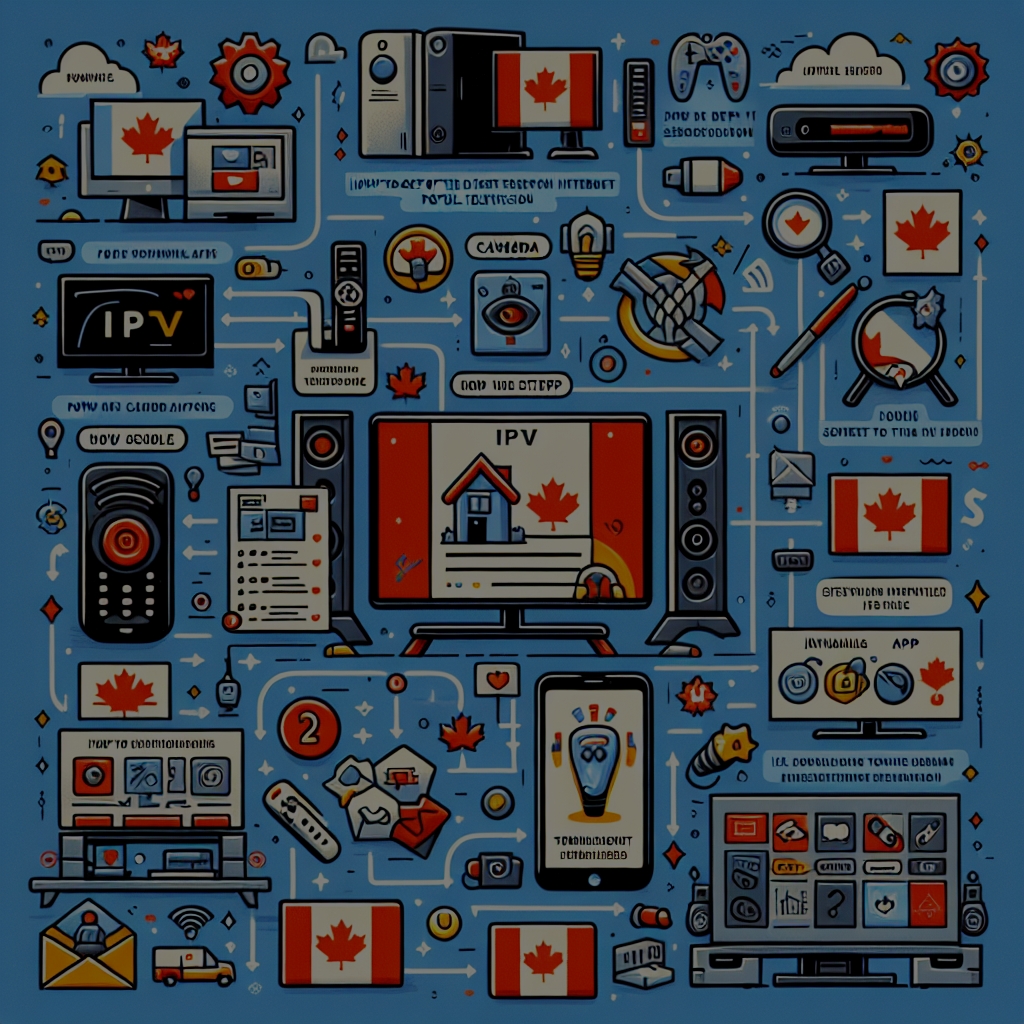TREX IPTV
Step-by-Step Guide to Setting Up IPTV in Canada
In recent years, Internet Protocol Television (IPTV) has gained significant popularity in Canada as an alternative to traditional cable television. With a growing number of Canadians opting for streaming services, understanding how to set up IPTV can enhance your viewing experience. This article serves as a comprehensive guide to help you navigate the installation process, necessary equipment, and troubleshooting tips to ensure you enjoy seamless IPTV service in your home.
Understanding IPTV: What It Is and How It Works in Canada
IPTV stands for Internet Protocol Television, a technology that delivers television programming and other video content through the internet rather than traditional terrestrial, satellite, or cable formats. In Canada, IPTV allows subscribers to access a wide range of channels, on-demand movies, and series through their internet connection. The content is streamed in real time, enabling viewers to watch their favorite shows without the constraints of a conventional broadcasting schedule.
The fundamental aspect of IPTV is its reliance on the Internet Protocol, which transmits data over the internet. This means that instead of receiving signals through coaxial cables or satellite dishes, IPTV users download video content directly from the internet. Canadian providers often offer various packages, including live TV, video on demand, and even interactive features. Consequently, viewers can experience flexibility and convenience in their viewing habits, taking advantage of easy access to diverse programming.
In Canada, IPTV services are regulated by the Canadian Radio-television and Telecommunications Commission (CRTC), ensuring that providers comply with certain standards. As a result, IPTV has become an appealing choice for many Canadians seeking a customizable and cost-effective way to enjoy entertainment. The increasing availability of high-speed internet also facilitates the growth of IPTV, making it a viable option for households looking to replace or supplement their traditional TV service.
Essential Equipment and Requirements for IPTV Setup
Before diving into the installation process, it’s important to ensure you have the essential equipment and requirements for setting up IPTV in your home. First and foremost, a stable and high-speed internet connection is crucial, as IPTV relies heavily on data transfer. A minimum internet speed of 25 Mbps is recommended for smooth streaming, especially if multiple devices will be using the connection simultaneously.
In addition to a robust internet connection, you’ll need a compatible streaming device. This could be a smart TV, a dedicated IPTV set-top box, a streaming stick (like Roku or Amazon Fire TV), or a computer. Most IPTV services also have apps available for smartphones and tablets. It’s advisable to check with your chosen IPTV provider for a list of compatible devices to ensure that you have the right setup for optimal performance.
Lastly, a reliable subscription to an IPTV service is essential. There are numerous providers available in Canada, each offering various channels and packages. Look for providers that offer a good selection of channels, quality customer support, and positive user reviews. Once you have your internet connection, streaming device, and subscription ready, you’re well-equipped to proceed with the installation.
Step-by-Step Installation Process for IPTV Services
The installation process for IPTV services can vary slightly depending on the provider and the device you are using. However, the following general steps will guide you through the setup. First, begin by connecting your streaming device to your TV or monitor. If using a set-top box, plug it into a power outlet and connect it to your router via an Ethernet cable for the best performance. Alternatively, you can connect wirelessly through Wi-Fi.
Once your device is set up, you will need to download and install the IPTV app recommended by your service provider. This could involve navigating to your device’s app store and searching for the appropriate application. After installation, open the app and enter the login information provided by your IPTV service. This typically includes a username, password, and sometimes an activation code to access your subscribed channels and content.
After logging in, take a moment to customize the settings to fit your viewing preferences. Adjust aspects such as video quality, parental controls, and notifications according to your needs. Once everything is configured, explore the interface and start enjoying your new IPTV service. Should you encounter any issues during installation, refer to your provider’s support resources for additional guidance.
Troubleshooting Common IPTV Issues in Canadian Homes
Despite the advantages of IPTV, users may occasionally encounter issues while using the service. One common challenge is buffering or lagging during streaming. This problem is often connected to internet speed or network congestion. To troubleshoot, first ensure that your internet connection is stable and meets the required speed. You can also try rebooting your router or connecting your streaming device directly to the router via Ethernet for improved performance.
Another frequent issue users face is channel availability. If certain channels are not functioning or are missing, it’s essential to verify your subscription plan and ensure that you have access to the desired channels. Sometimes, reloading the app or refreshing the channel list can resolve temporary glitches. If the issue persists, reach out to your IPTV provider for support, as they may need to refresh your account settings.
Lastly, if you’re experiencing poor video quality, check your device’s settings to ensure that the video resolution is set appropriately. This may involve adjusting quality settings within the app or ensuring your internet connection is stable. If you continue to have difficulties, consulting your IPTV provider’s customer support can help diagnose and resolve technical issues effectively.
Setting up IPTV in Canada can be an enriching experience, offering a flexible and diverse alternative to traditional television services. By understanding what IPTV is, gathering the necessary equipment, and following a straightforward installation process, you can enjoy a world of entertainment at your fingertips. Moreover, being equipped with troubleshooting tips will empower you to handle any issues that may arise, ensuring a smooth viewing experience. Embrace the future of television with IPTV and transform the way you consume content in your home.


